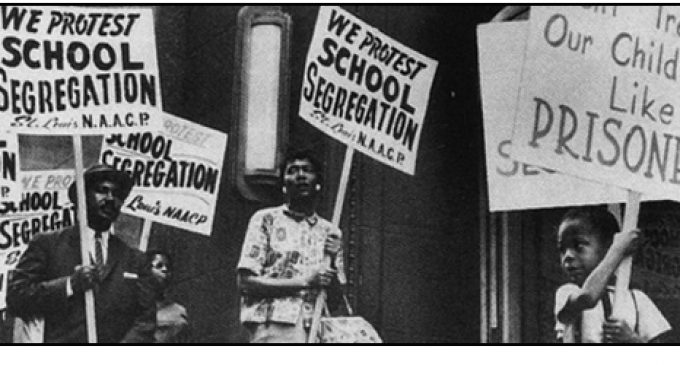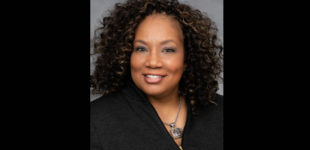Editorial: 60 Years After Brown

Because I was a horribly ill-behaved child, I found myself shipped from San Francisco to Moss Point, Miss. in August 1969. My mother’s plan was that I’d spend my junior year in high school there and live with my schoolteacher aunt Annie Mae Randall, who was somewhat affectionally known as the “kid breaker.” It was legend that if you did not understand rules, she would beat them into you. But her method was unlimited interrogation, not (much) physical correction.
In any case, I landed in Moss Point 15 years after the Supreme Court ruled that legal segregation was illegal. However, by ruling that the Brown decision should be implemented with “all deliberate speed,” many towns in Mississippi saw this as a signal to “take (their) own sweet time.” I ended up attending all-black Magnolia High School, while the all-white Moss Point High School was in rather close proximity. A year later, Magnolia became the town’s junior high school, and Moss Point High was the school for everyone.
Until 1970, though, the city’s educators had come up with truly bizarre ways to give a polite nod to integration. For a period, black teachers went to teach in white schools, while white ones taught in the black schools. To this day, I can’t figure out the proportional representation that had black teachers in the white schools about a third of the time, with white teachers in the black schools about half of the time. My numbers may be wrong, but both black and white students were short-changed when they were robbed of the continuity of instruction.
On the days that Auntie Annie Mae had to go to the white schools, she woke up muttering that this was not integration and mumbling that “all these years after Brown” integration had not happened in Moss Point schools. Since the “kid breaker” didn’t really yell, she took her frustration out on anyone who would listen, talking legalisms, history and the way it ought to be.
Occasionally Auntie would say, “at least we aren’t in Virginia,” then she would talk about the schools that actually closed rather than admit black students. In that state, there was a plan of “massive resistance” that denied funds to integrated schools, which had the effect of denying education to black children for at least four years.
In 1969, most African Americans had experienced de facto segregation, but few Californians had experienced the de jure segregation that Brown ended. Had I not had the Mississippi experienced, I would have thought that segregation was as much a fairy tale as Santa Claus or as distant as “the old days.” Neither fairy tale, nor distant fact, de jure segregation is alive and well today.
Today, schools are segregated by income and zip codes, not by race. Cash-strapped urban school systems, largely funded by eroding property taxes, have fewer resources than well-funded suburban schools. There are also oases in urban public schools where higher income parents come together to fund activities at their neighborhood schools, such as sports and music, which have been eliminated from other public schools for financial reasons.
K-12 school segregation transfers into an advantage for students from the best-financed schools. These young people have the advantage of Advanced Placement (AP) and International Baccalaureate (IB) classes that are not often offered in those urban school districts that are struggling to provide bare basics. When colleges give students with advanced classes extra admissions consideration, they implicitly disadvantage those who did not have the opportunity to take advanced classes because of where they live.
There are dozens of other consequences of de facto segregation. They include the racial achievement gap and unequal access to scholarship, internship, networking and employment opportunities. Brown opened the door and, by ending de facto segregation, changed the terms and conditions of African American life. It got us to the starting line, but we are still a long way from the finish line.
Julianne Malveaux is a Washington, D.C.-based economist and writer. She is President Emerita of Bennett College for Women in Greensboro.











